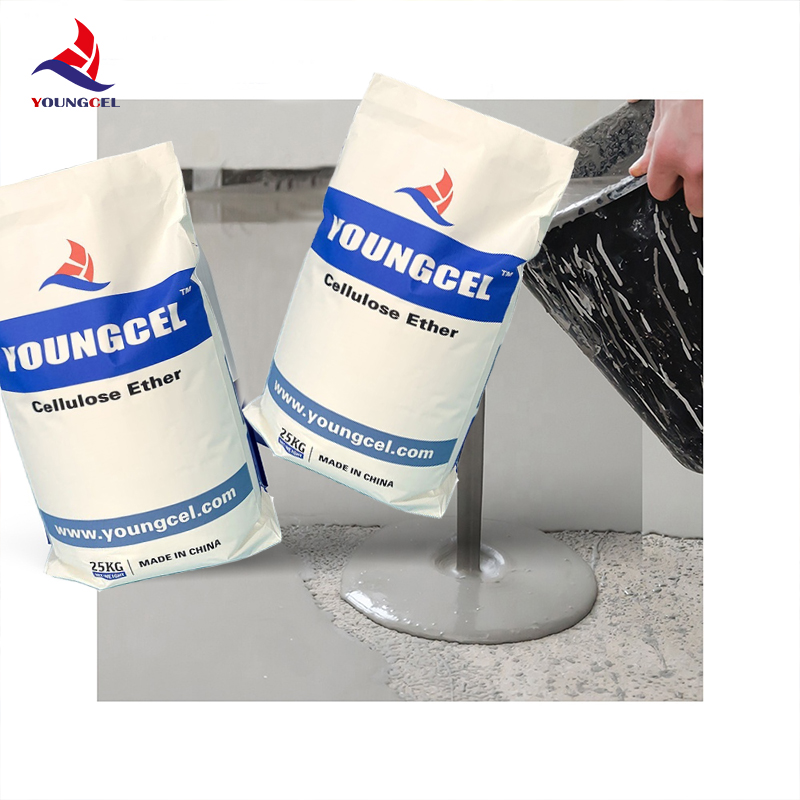Understanding Cellulose Ethers HEC, HEMC, and HPMC
Cellulose ethers are a class of compounds derived from cellulose, a natural polymer extensively found in plant cell walls. Among the various types of cellulose ethers, Hydroxyethyl Cellulose (HEC), Hydroxyethyl Methyl Cellulose (HEMC), and Hydroxypropyl Methyl Cellulose (HPMC) are the most widely used due to their versatile properties and broad applications across multiple industries. This article delves into the characteristics, applications, and significance of these cellulose ethers.
Properties of Cellulose Ethers
1. Hydroxyethyl Cellulose (HEC) HEC is a non-ionic, water-soluble polymer obtained by the alkali-assisted etherification of cellulose with ethylene oxide. One of the most notable properties of HEC is its ability to form viscous solutions in water. The viscosity can be adjusted by changing the concentration and molecular weight of HEC. These traits make HEC an excellent thickening and stabilizing agent in a variety of formulations.
2. Hydroxyethyl Methyl Cellulose (HEMC) HEMC has a similar structure to HEC but contains both hydroxyethyl and methyl groups. This modification enhances its solubility and thermal stability, making it effective in both hot and cold conditions. HEMC is often used in applications requiring exceptional water retention and emulsification properties, making it a favorite in the construction and personal care industries.
3. Hydroxypropyl Methyl Cellulose (HPMC) HPMC is another derivative of cellulose that combines hydroxypropyl and methyl groups. It is a versatile agent known for its excellent solubility in both cold and hot water, forming clear and viscous solutions. HPMC stands out for its ability to modify the rheological behavior of solutions. It is widely used as a binder, thickener, and film-forming agent in pharmaceuticals, food products, cosmetics, and construction materials.
Applications of Cellulose Ethers
Cellulose ethers play crucial roles in various sectors
cellulose ether hec hemc hpmc

- Pharmaceutical Industry HPMC is widely used as a binder in tablet formulation, providing controlled-release properties. Its ability to form films allows it to be utilized in coating applications, enhancing the stability and shelf life of pharmaceutical products.
- Construction In construction, HEC and HEMC are extensively employed in mortar and plaster formulations, improving workability and adhesion. Their water-retaining properties ensure that cement remains workable for extended periods, allowing for better application and finishing.
- Food Industry Cellulose ethers, particularly HPMC, are utilized as thickening agents and stabilizers in various food products. They help maintain texture, enhance mouthfeel, and prevent separation in sauces and dressings.
- Cosmetics and Personal Care HEC and HEMC are common ingredients in personal care formulations, including shampoos, lotions, and creams. They provide viscosity, enhance product stability, and improve the overall user experience.
Significance in Research and Development
As industries evolve, so do the demands for more efficient and sustainable materials. Cellulose ethers are being studied for their potential in biocompatibility and biodegradability, making them suitable candidates for eco-friendly products. Ongoing research focuses on enhancing their functional properties and exploring new applications, especially in the biomedical field, where HPMC is gaining attention for drug delivery systems.
Conclusion
Cellulose ethers, including HEC, HEMC, and HPMC, are integral to many industries due to their unique properties and versatile applications. Their ability to modify the physical properties of formulations makes them indispensable in pharmaceuticals, construction, food, and personal care products. As research continues to unlock new possibilities, cellulose ethers are poised to play an even more significant role in developing sustainable and innovative solutions for various challenges. Their remarkable properties combined with an increasing focus on sustainability ensure that cellulose ethers will remain relevant in future developments across diverse fields.
-
A Comprehensive Guide to Methyl Ethyl Hydroxyethyl Cellulose: Applications and Industry InsightsNewsNov.24,2025
-
Understanding Methyl 2 Hydroxyethyl Cellulose: Uses, Benefits & Industry InsightsNewsNov.24,2025
-
Hydroxyethyl Methyl Cellulose HEMC: Industrial Uses, Benefits & Future TrendsNewsNov.23,2025
-
HEMC Cellulose: Versatile & Sustainable Industrial Polymer | YoungcelNewsNov.23,2025
-
Methyl Hydroxyethyl Cellulose: Versatile Building Block for Industry & SustainabilityNewsNov.23,2025
-
CAS 9032 42 2: Understanding Polyvinyl Alcohol's Impact on Industry & SustainabilityNewsNov.22,2025




